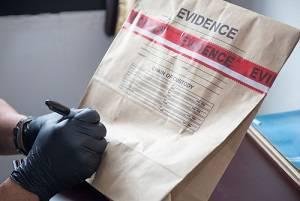The Truth Behind Forensic Evidence: It’s Not Infallible
 If you ever watch popular crime and police shows on television or streaming internet, you would assume that forensic scientific evidence is irrefutable. The experts speak with certainty, and the test results and staggeringly high probabilities of correctness overwhelm, and suspects are convicted based upon this evidence so provided.
If you ever watch popular crime and police shows on television or streaming internet, you would assume that forensic scientific evidence is irrefutable. The experts speak with certainty, and the test results and staggeringly high probabilities of correctness overwhelm, and suspects are convicted based upon this evidence so provided.
While this happens more often than not in real life, the American public would be surprised to learn that the science behind the supposedly definitive forensic opinion which seals the case on the TV show is not as clear-cut and certain. And sometimes, the scientific opinion is later called into question and is shown to be invalid. This is not all that uncommon, as many people in the criminal justice system have been wrongfully convicted of serious crimes. Based on little more than a hair, tool mark or fingerprint comparison, some have spent years of their lives behind bars.
Mistaken Forensic Evidence Opinions Have Serious Consequences
“Forensic science” refers to the application of scientific or technical practices to the recognition, collection, analysis, and interpretation of evidence for criminal and civil law or regulatory issues. Developments over the past two decades—including wrongful convictions in which forensic science has played a role and scientific studies of forensic science methods—have called increasing attention to the question of the scientific validity and reliability of some important forms of forensic evidence and of testimony based upon them.
Convicted of a murder he did not commit, one man sentenced to 25 years in prison based on circumstantial evidence and dental comparison, was later exonerated when the real killer committed suicide and his DNA was matched to samples found on the victim. In the past year, Attorney Ray Dall’Osto of this law firm received a letter from the U.S. Department of Justice Special Counsel stating that as a result of a review of forensic evidence and testimony in a serious felony case involving one of his old clients, who was sentenced to prison, “we have determined that a report or testimony regarding microscopic hair comparison analysis containing erroneous statements was used in this case.” Now what can be done to right a wrongful conviction?
These cases are not flukes. In fact, what happened to these people has happened to hundreds of others that we know about and potentially quite a few more. Many of them were imprisoned as a result of questionable or invalid forensic evidence, and most of them have been later exonerated by DNA evidence. Yet the use of questionable forensic evidence continues to dominate courtrooms, not just popular crime shows, literature and the media. And when it is discovered, many in the criminal justice system are slow to accept that an error has happened and the need to correct the erroneous conviction and/or sentence that was imposed.
National Research Council’s Report Critical of Forensic Scientific Evidence
In September 2016, the President’s Council of Advisors on Science and Technology (PCAST) released its study report Forensic Science in Criminal Courts: Ensuring Scientific Validity of Feature-Comparison Methods. This study came in the aftermath of the highly critical 2009 National Research Council report on serious flaws with many forensic science methods, Strengthening Forensic Science: A Path Forward. To help ensure the validity of forensic evidence used in the nation’s criminal justice and legal system, the President’s Council stressed the continuing need (1) for clarity about the scientific standards for the validity and reliability of forensic methods, and (2) the need to evaluate specific forensic methods to determine whether they have been scientifically established to be valid and reliable. This include looking back to determine if previous methods retain their supposed scientifically validity.
When Your Case Includes Forensic Evidence
It is a frightening thing to find yourself accused of a crime. It is even scarier to learn that circumstantial evidence and forensic evidence may supposedly tie you to that crime. Do not be fooled, bullied or blindsided. Fight back, know your rights, and seek assistance from skilled and knowledgeable criminal defense attorneys, who have a depth of experience dealing with forensic evidence issues. Contact Gimbel, Reilly, Guerin & Brown, LLP at 414-271-1440 and schedule a consultation today. Our Milwaukee, Wisconsin criminal defense lawyers will knowledgeably and aggressively protect your rights and try to obtain the most favorable outcome for you that is practicable.
Source:
2009 NRC Report -
https://www.ncjrs.gov/pdffiles1/nij/grants/228091.pdf
2016 President’s Council Report -
https://www.whitehouse.gov/sites/default/files/microsites/ostp/PCAST/pcast_forensic_science_report_final.pdf
http://www.theatlantic.com/magazine/archive/2016/06/a-reasonable-doubt/480747/







